Blueprint

Blueprint is a production planning and management tool that creates a single source of truth for the entire lifecycle of deliverables for anything from marketing campaigns to episodic productions.
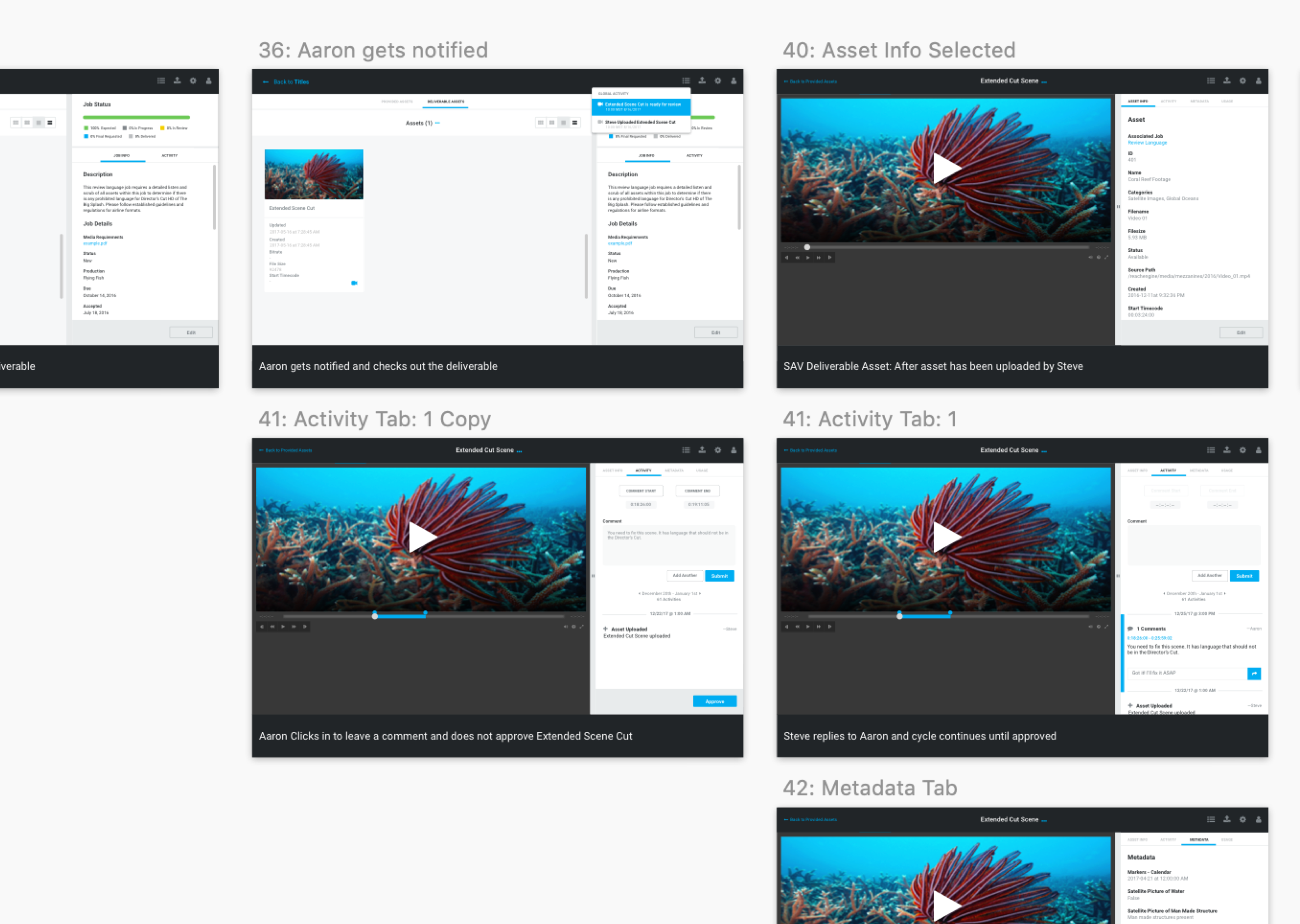
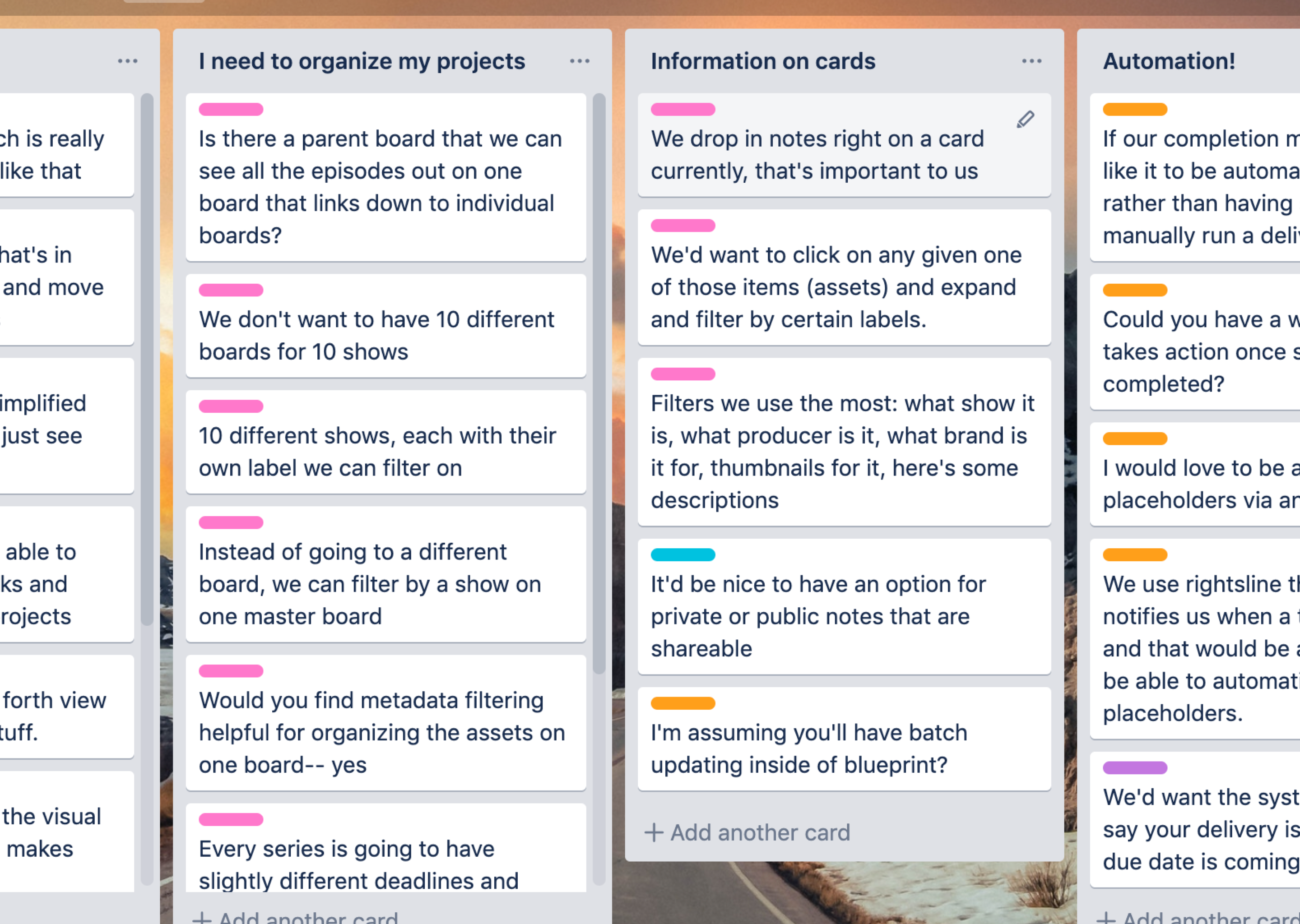
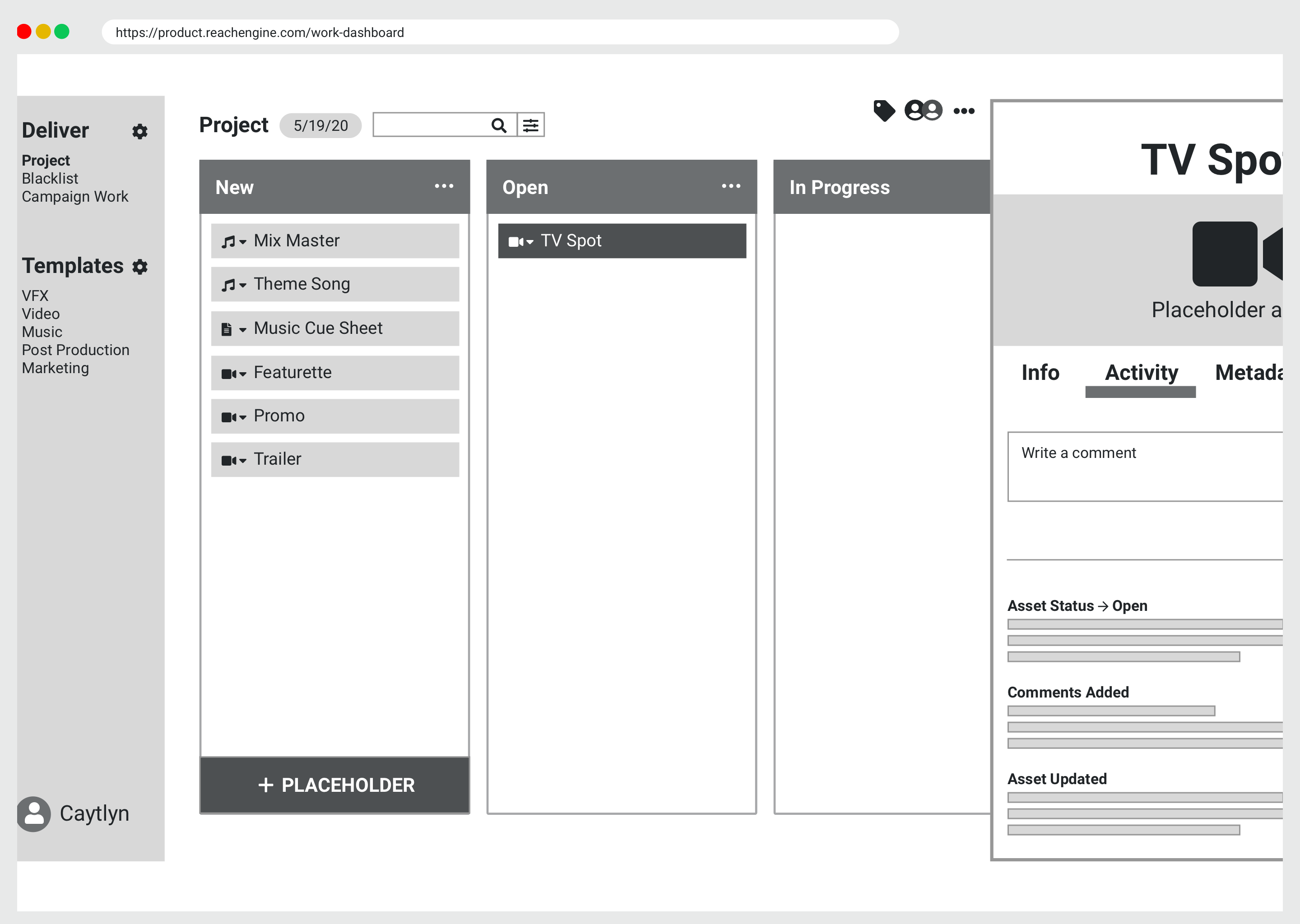
A common problem enterprise production companies face is wrangling their content into a single place that provides executives the 10,000 ft view they need, while empowering creatives to work uninhibited. Blueprint is a planning and delivery tool that mitigates the conflicting processes between these disparate groups and tracks the content lifecycle from inception to archival.
Blueprint’s target audience is anyone that has content that they are planning, creating, and delivering from large scale enterprise production houses to small creative teams. Users include: freelance artists and editors, production management teams, executive producers, and supervisors.
Through my research, I found that users largely fell into 3 groups:
- Planners - anyone that needs to organize and plan content to be delivered
- Workers - internal or external resources that fulfill content in various phases
- Overseers - users in management that need insight to overall project phases and statuses
I led the charge on this innovative product from the UX front by arranging interviews and feedback sessions with Fortune 100 production companies, wire-framing and prototyping initial concepts, and working closely with product and engineering to bring Blueprint to life.
Blueprint has been attempted in other lifetimes at Levelsbeyond, one of which was in flux when I started.
A V1 was released without doing proper research, with very little UX team involvement, and resulted in half
implemented concepts that made the entire experience clunky and confusing.
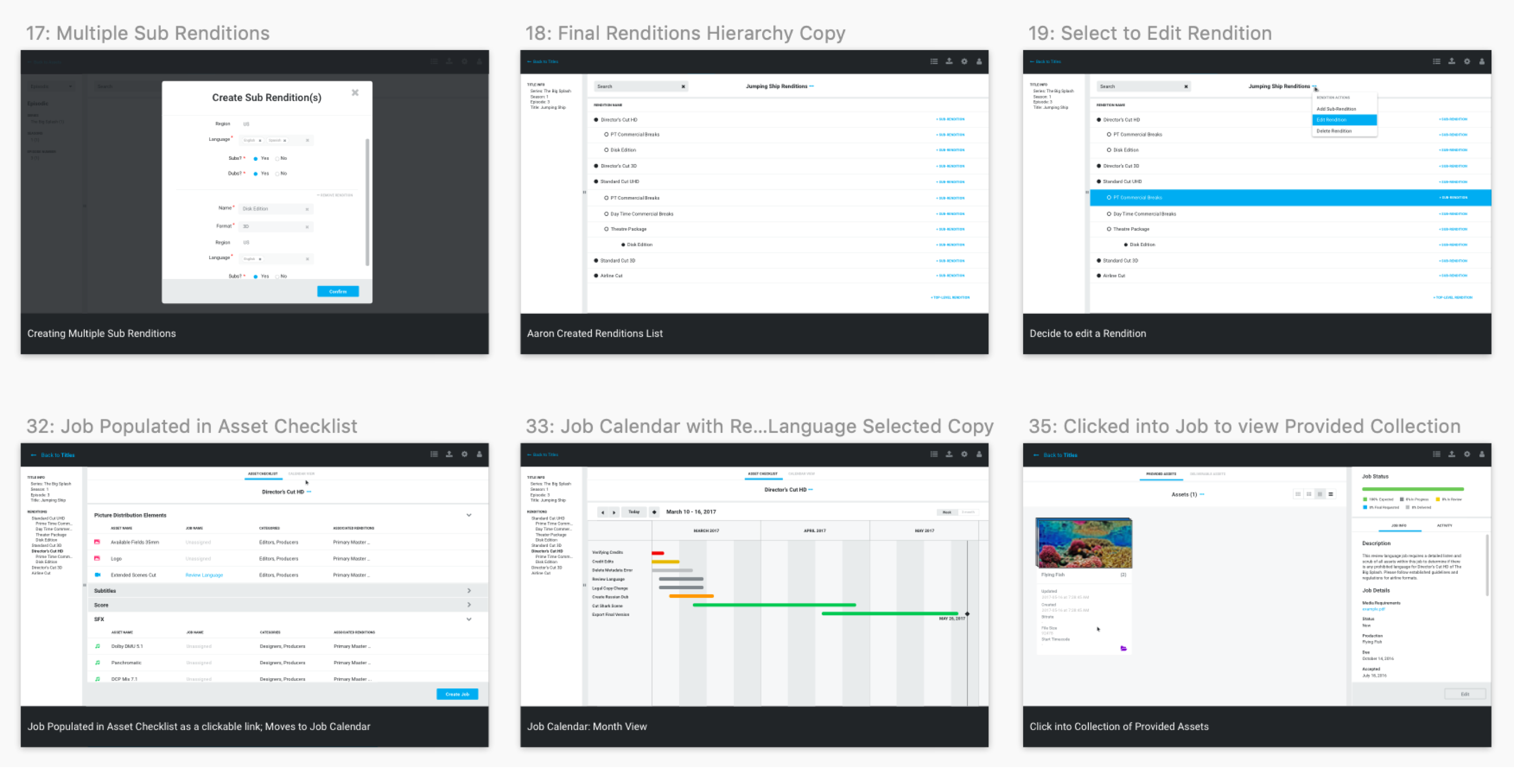
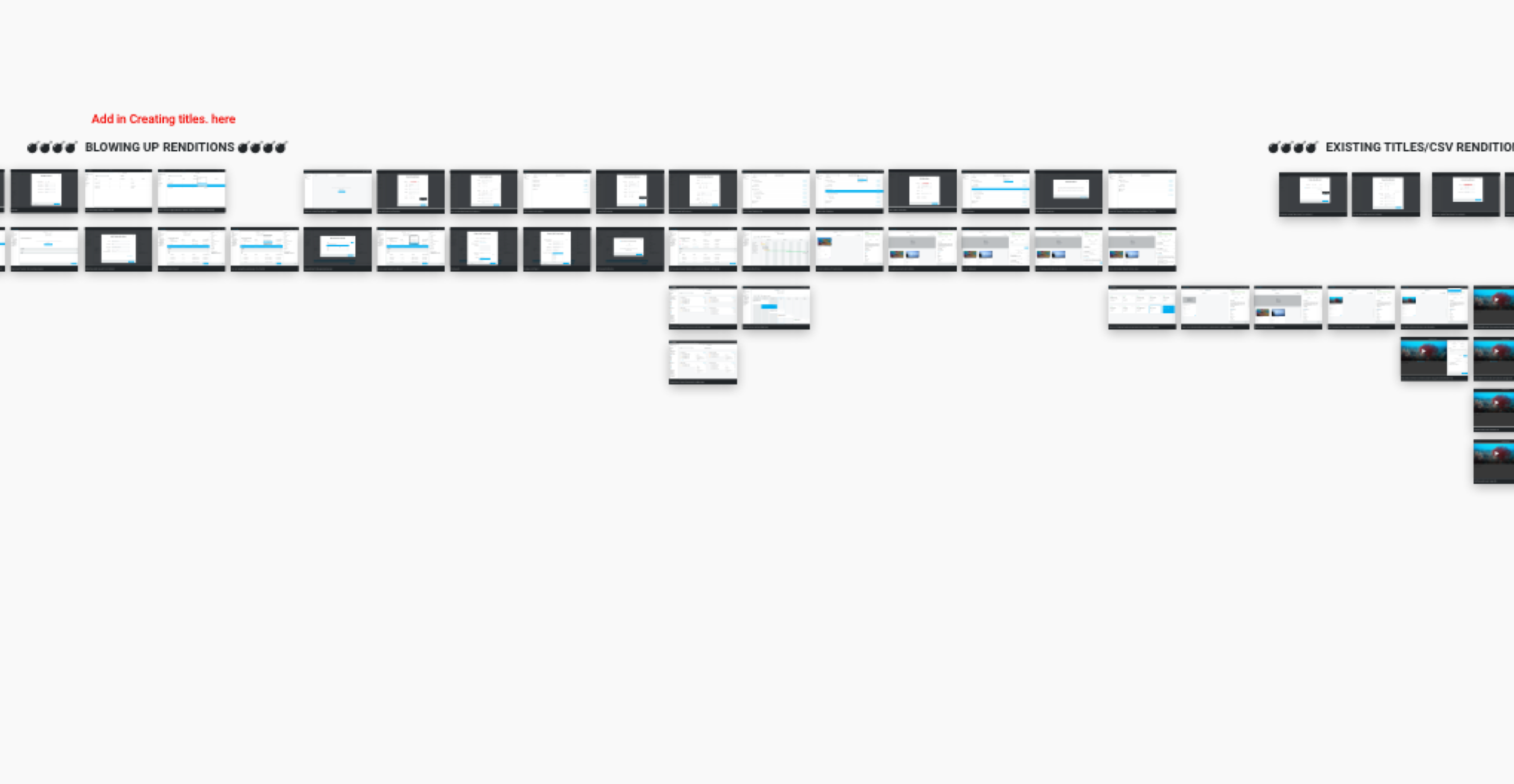
The most recent iteration has to hit the mark by continuing on what went right in V1 to reduce waste, but also bring a fresh take on the product by creating innovative market differentiators. The push and pull between iterating on what we have versus starting from scratch lead to churn and pushed releases.
"Those who do not learn from history are doomed to repeat it"
This was on the top of my mind when taking on this product. Several things went wrong, and some things went right
in Blueprint 1.0— both of which need careful attention in starting anew. Before saying, “BEGONE Blueprint 1.0!”
I took an in-depth look at the current functionality and documented why it was so poor. I also arranged interviews
with previous stakeholders to identify where exactly we missed the mark and how we could make improvements.
Through this backlog and user research conducted with existing clients, we were able to parse out areas to
divide, conquer, and return results back to each other as a team.
Iterative vs Exploratory Mocks and Prototyping
Instead of making a hasty decision either way, I decided to rapidly brainstorm both approaches to then help prioritize
the best path forward. I mocked approaches to improve upon what we had as well as facilitated an offsite to explore
what we would want for a grand vision for Blueprint.
Iteration Process
- Identify existing problems
- Solve with constraints
- Prototype options
Exploratory Process
- "What if" mindset
- Crazy ideation
- Peeling back what concepts rock and which are garbage
- Evaluate with users quickly
User Feedback
With both of these approaches mocked and prototyped, I organized interviews with companies of varying sizes
and production scale to see which of the paths seemed more understandable and viable for needs.
Outcomes are still being determined since this is an progress product.
However, I've developed functioning prototypes help flesh
out both the short-term, mid-term, and long-term roadmaps.
Key differentiators that have come out of research, design, and prototyping include:
- Templates
- Robust enough for large companies scaling processes.
- Rapid enough for small teams.
- Business Process Customization
- No rigidity or forced hierarchy in how users have to configure projects, tasks, and deliverables
- Easily customizable for small companies
- Capable of handling complex flows and processes for enterprise companies
- Intuitive Dashboards
- Utilize search features to allow users to customize the breadth or depth of a dashboard what statuses they care about